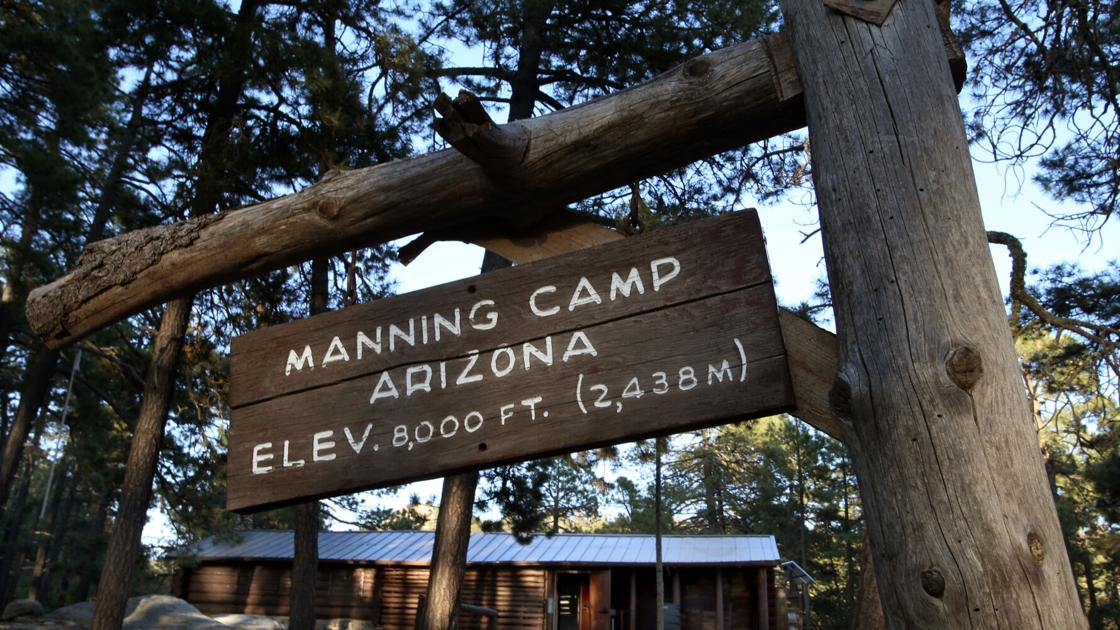Experience a day in the life of a Tucson-area wilderness ranger
This Manning Camp wilderness ranger hikes 10 miles to get to her job, which supports field work crews in Tucson's Rincon Mountains. Tucan-area wilderness ranger Kristian Prochovnick has opened the cabin of her seasonal appointment in March and will keep it open until November. Most don't camp at Manning because the reserved six-site campground does not work well for thru-hikers. The Park Service is looking at an adjacent site that might be set up for single-hiker sites with permits still obtained through recreation. The Manning area was recently decked out with tents for five biological technicians, a Saguaro Trail Crew member and three packers who came with two “pack strings” (mules for hauling supplies). The pack train also brought propane fuel and mule feed. The winter crew was based at Grass Shack, working on the Manning Camp Trail, and the summer trail crew will have a “spike camp” on Heartbreak Ridge between Manning Camp and Happy Valley Saddle. The cabin was listed in the National Register of Historic Places in 1975 and was later designated wilderness.

Published : 2 years ago by Cindy Coffer Chojnacky Special to the Arizona Daily Star in
“We usually open the cabin in March and keep it open until November,” Prochovnick said. Due to heavier snow this year, the opening was late March. Her seasonal appointment runs March through November, with eight 10-hour work days and six days off. Days 1 and 7 include the hike up or down to Manning; Day 8 is an office day. This is her second year on the job.
Most don’t camp at Manning because the reserved six-site campground does not work well for thru-hikers. It allows six people per site. Since most thru-hikers plan and hike alone, this means six single hikers might reserve the whole campground. The Park Service is looking at an adjacent site that might be set up for single-hiker sites with permits still obtained through recreation.gov.
Recently, the Manning area was decked out with tents: for five biological technicians, a Saguaro Trail Crew member and three packers who came with two “pack strings” (mules for hauling supplies). Sid Kahla, a rancher from Sierra Vista, has packed for the Park Service since 2009. He rode one of his horses and led his four mules; the other seven mules belong to the park and were wrangled by two Park Service employee packers. Field crews buy their own food and supplies brought up by the mules. Manning has a few big on-site tents, but most field people have their own.
The pack train also brought propane fuel and mule feed. The big May project was moving a camp for the Saguaro Trail Crew. The winter crew was based at Grass Shack, working on the Manning Camp Trail. The summer trail crew will have a “spike camp” on Heartbreak Ridge between Manning Camp and Happy Valley Saddle. Tents, food, water, tools and fuel will be packed in. The pack string will spend a night at Manning, a day packing supplies to the spike camp and then another night at Manning, requiring a lot of pellets for the mules.
The land became Coronado National Forest in 1907, and the cabin fell into disrepair until 1922, when the Forest Service reconditioned it to house fire and trail crews. In 1935, most of the Rincons were transferred to the Park Service as Saguaro National Monument, now Saguaro National Park. In 1975, the cabin was listed in the National Register of Historic Places. In 1976, much of Saguaro Park was designated wilderness.
The propane stove was not working too well, so Prochovnick suggested cooking outside either on a large open stove or a big campfire. (She got the stove fixed later in the week). She showed the technicians new to Manning what worked and what did not work in the kitchen. She displayed a whiteboard where she said she’d post names of people assigned to three chores: wash dishes, wipe down all surfaces and sweep. “This year we are winning the battle with mice.”
Trail crew member Kristian Sliwa was helping Prochovnick for the week. He had an overlap between the park winter trail crew and the summer crew coming on the next week. Prochovnick planned to clean out organic matter from the water source, clear logs from trails around Mica Mountain, deep clean the cabin and sort, clean and inventory tools. “Some jobs, like moving a log, are better with two people,” Prochovnick said.
Topics: Arizona, Tucson
